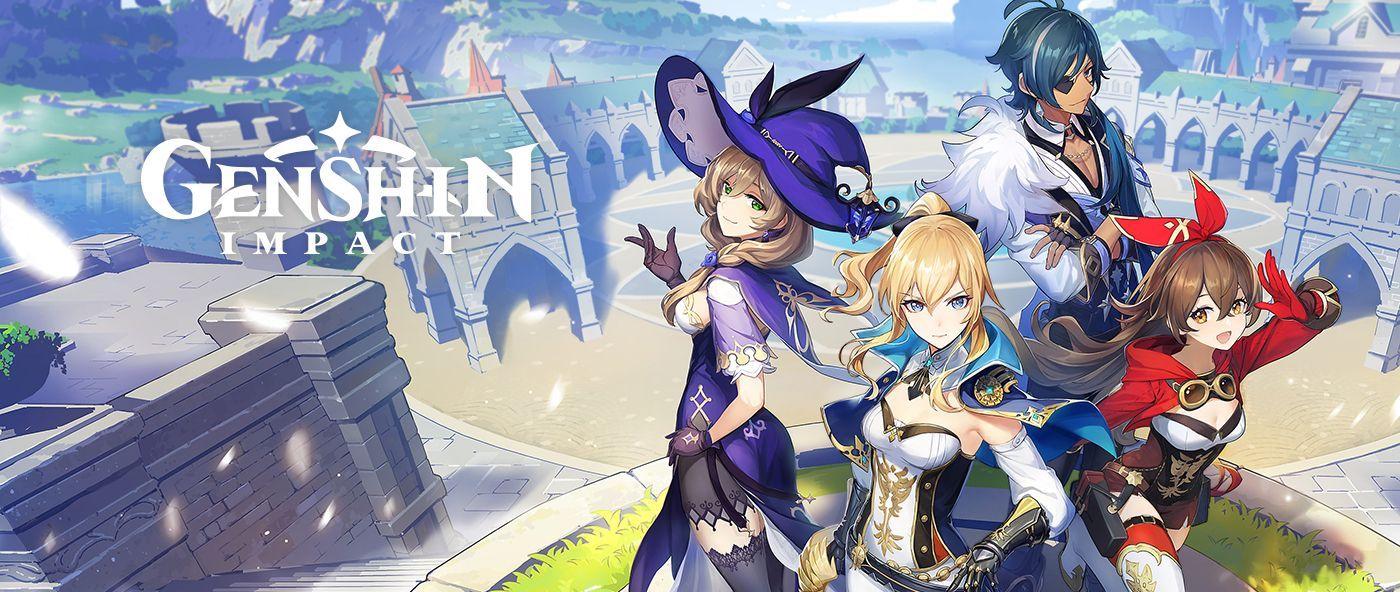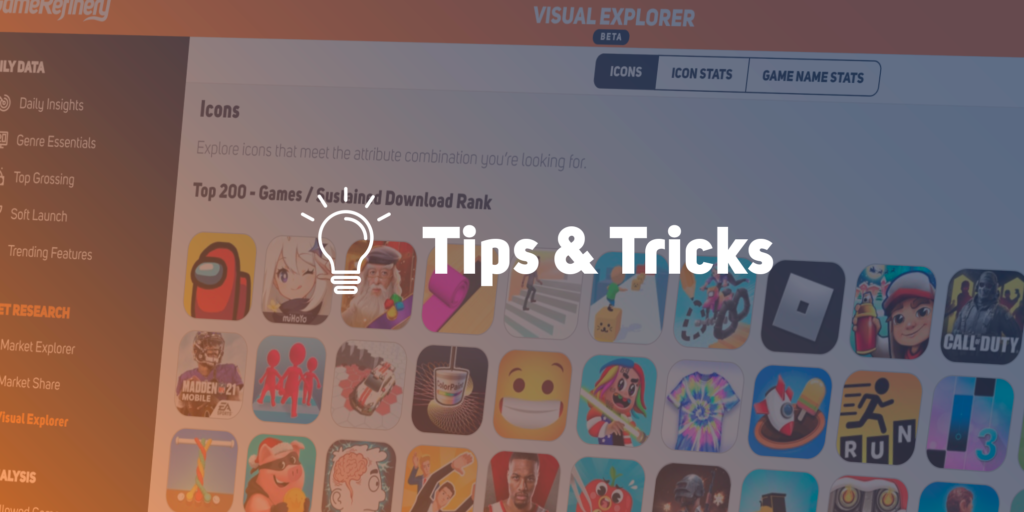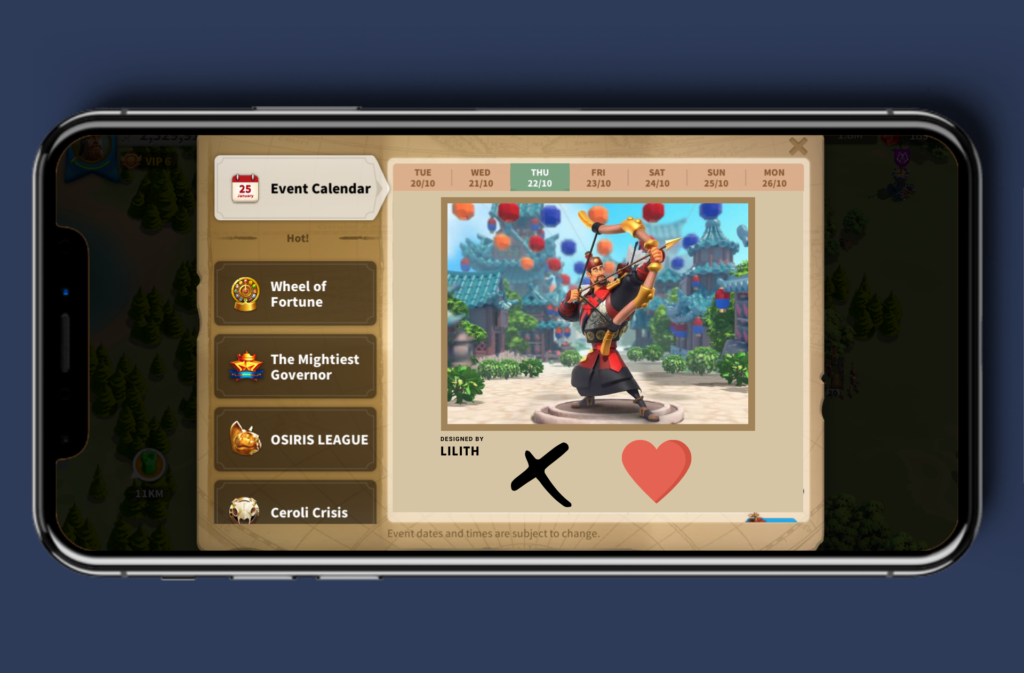Every once in a while a new game is launched that pushes the boundaries of what mobile games are capable of. Genshin Impact is one of those titles.
Editor’s Note: This is an extended version of an article on the same topic that we published in Pocketgamer.biz.
It’s yet another example that blurs the line between “HD” gaming and mobile – Genshin looks amazing, tells a compelling story, and, most importantly, dares to cast core gameplay into a central role. Many have compared GI to Nintendo’s Zelda series, especially its latest mainline title: Breath of the Wild. The games certainly share common elements in the art style and open-world mechanics, but there are differences. For example, GI’s character design leans more towards the anime-waifu side of the spectrum, and the main quest/narrative design is more linear. In this blog post, we will cover Genshin Impact’s key elements and suggestions on how the game can go even further.
Genshin Impact’s Launch Performance
In late September, GI was launched for mobile, PC, and PS4 to huge success reaching the top 10 grossing positions in all major markets. E.g., in the US, Japan, and China, the game has already generated more than 30M$ in iOS only, and allegedly Mihoyo has already offset Genshin Impact’s development costs of 100M$.
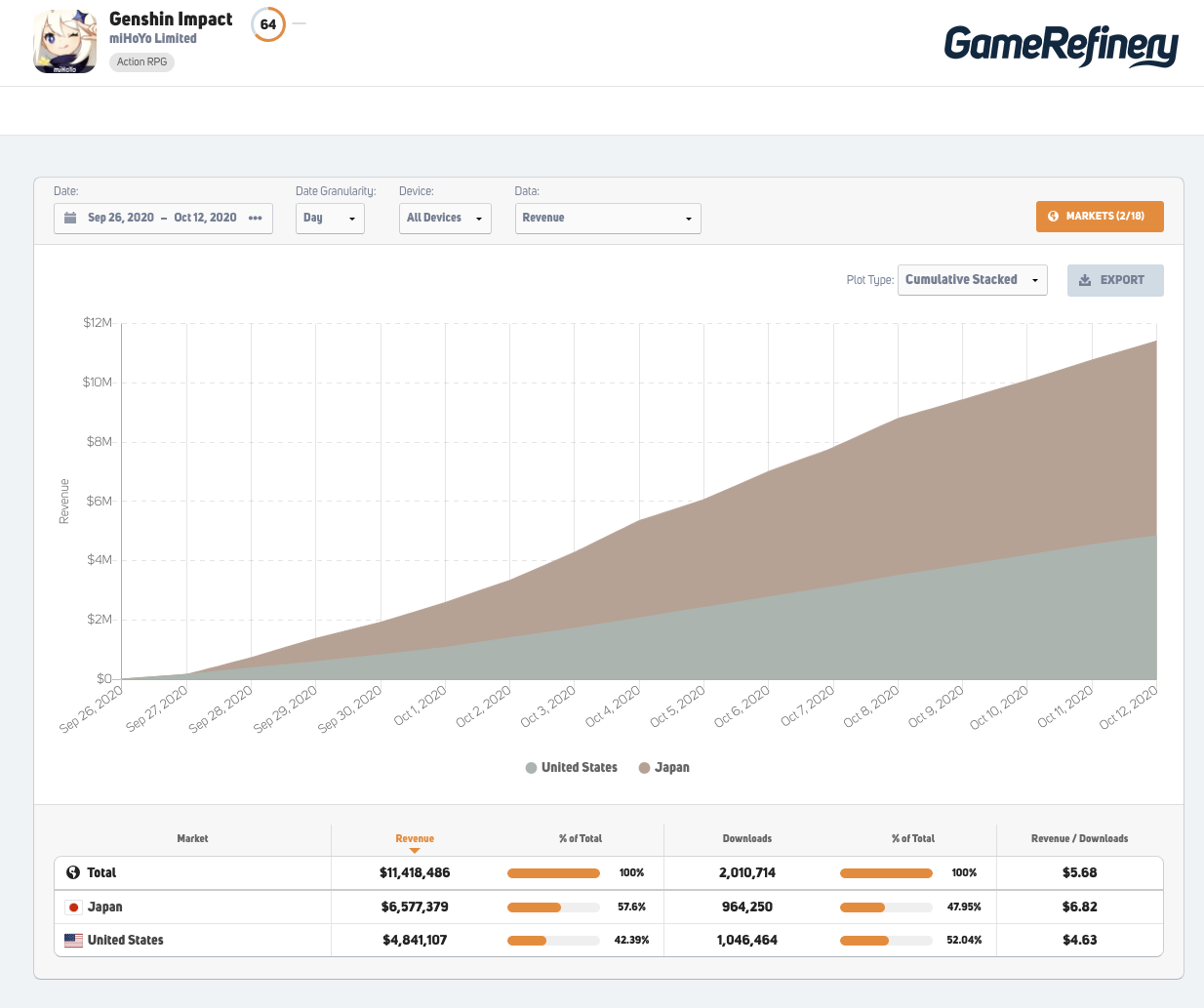
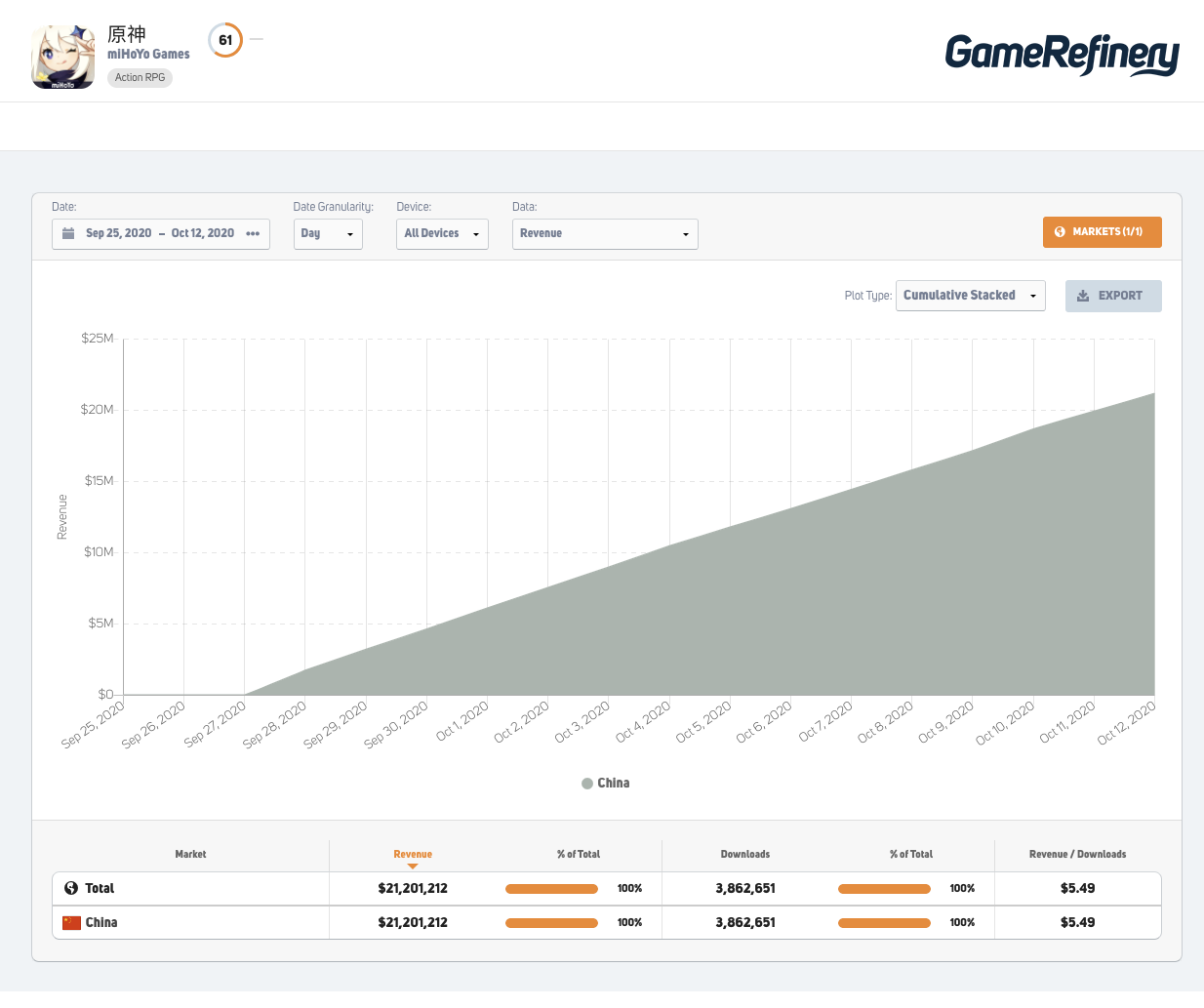
And the Best Core Gameplay Award Goes to…
It is remarkable how much thought has been put into GI’s core gameplay to make it a vocal part of the experience. Quest design is excellent and offers a lot of variety: there are puzzles, flying tasks, and even sneaking missions. The open-world has been crafted with care, too; oftentimes, when set on a quest, we found ourselves spotting interesting stuff along the way and getting sidetracked.
The core loop is the classic RPG loop where players
A. Complete tasks and/or interact with the open world to gather experience, resources, and items to…
B. …make progress in the story, open new game features, develop characters & items to…
C. …repeat A.
The combat layer is spiced up with the use of elemental affinities. See enemies hanging out in water? Freeze them with your cryo character. Encounter ice monsters? Have a barbeque with your pyro. Players can switch characters on the fly to choose the best approach to each enemy type and environment. Elemental affinities are also utilized in puzzle design.
It is also worth mentioning that Genshin Impact doesn’t have any level of core gameplay automatization. It is not even possible to skip cutscenes. This is rather interesting considering some of the mobile RPG design trends, such as the rise of idle-RPGs. In certain markets such as China, GI is one of the only top grossing RPGs without core automatization.
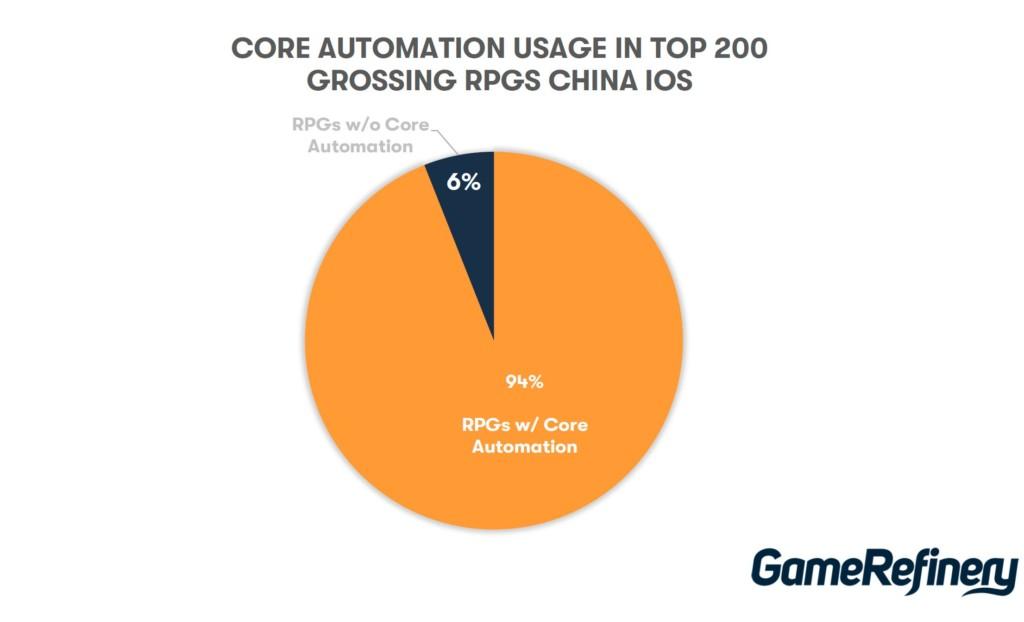
Meta Layer of Genshin Impact
If we take a look at Genshin Impact’s meta-layer, it is actually quite a traditional action RPG meta. Players collect characters, upgrade/level them up in several different ways, and equip them with better and better gear. In this chapter, we’ll take a quick glimpse of the different upgrade/leveling types for characters/items.
Characters
Level Up
The basic way to upgrade characters in Genshin Impact is leveling up. Players use XP books to increase the basic level of the characters. Increasing levels improve characters’ statistics.
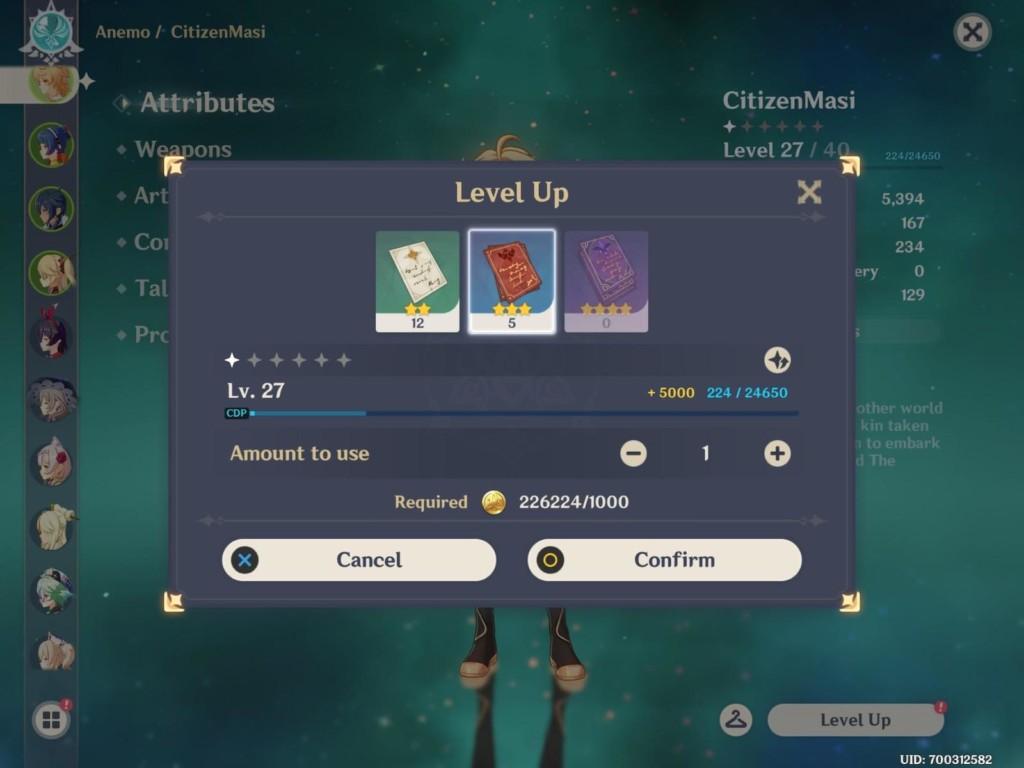
Ascension
When a character reaches a level cap, players need to Ascend the character. To do that, players need to collect specific material items that can be found, for example, from different Domains or as quest rewards.
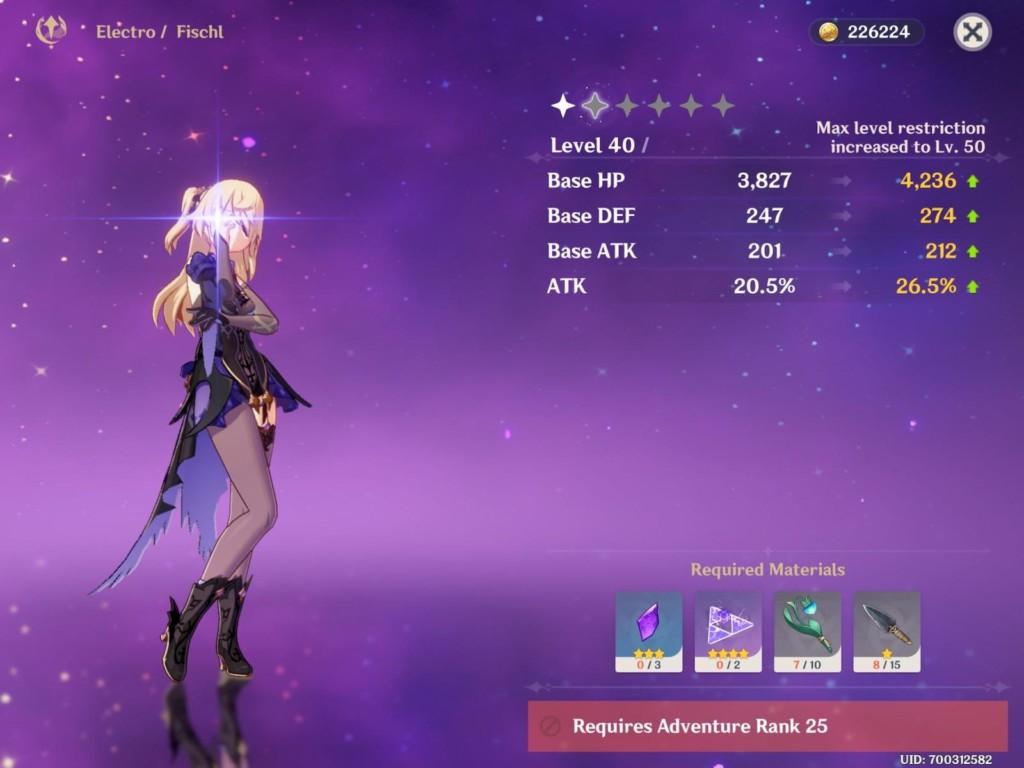
Constellation
Constellations are passive boosts for each character (e.g., increasing damage of specific skills). The main source for characters in Genshin Impact is the gacha system. During the launch period, there’s a bit over 20 different unique characters to be collected, but miHoYo has spent depth on the game’s gachas by adding the possibility to get duplicates of characters. Getting a duplicate automatically transfers the characters into a Stella Fortuna item, which is then used to unlock the next level of Constellation.
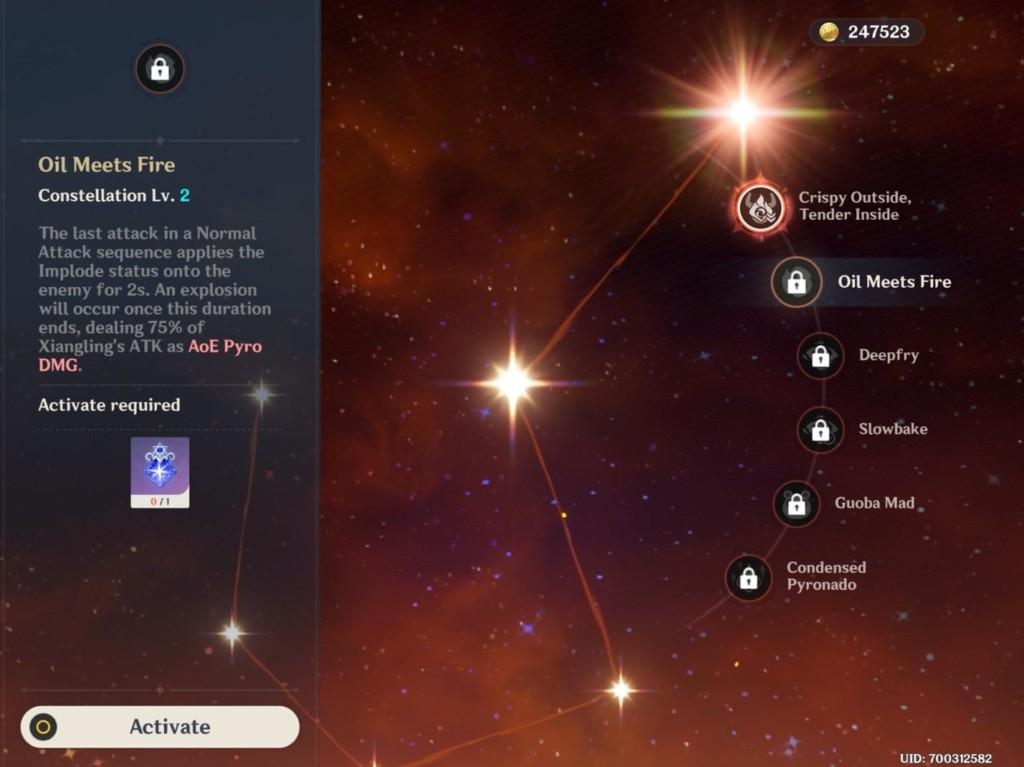
Talents
Each character also has different talents/skills to use. Normal attack and two combat talents to be actively used in combat and a handful of different passive talents. Talents can be upgraded separately after a certain level of Ascension for a character has been reached.
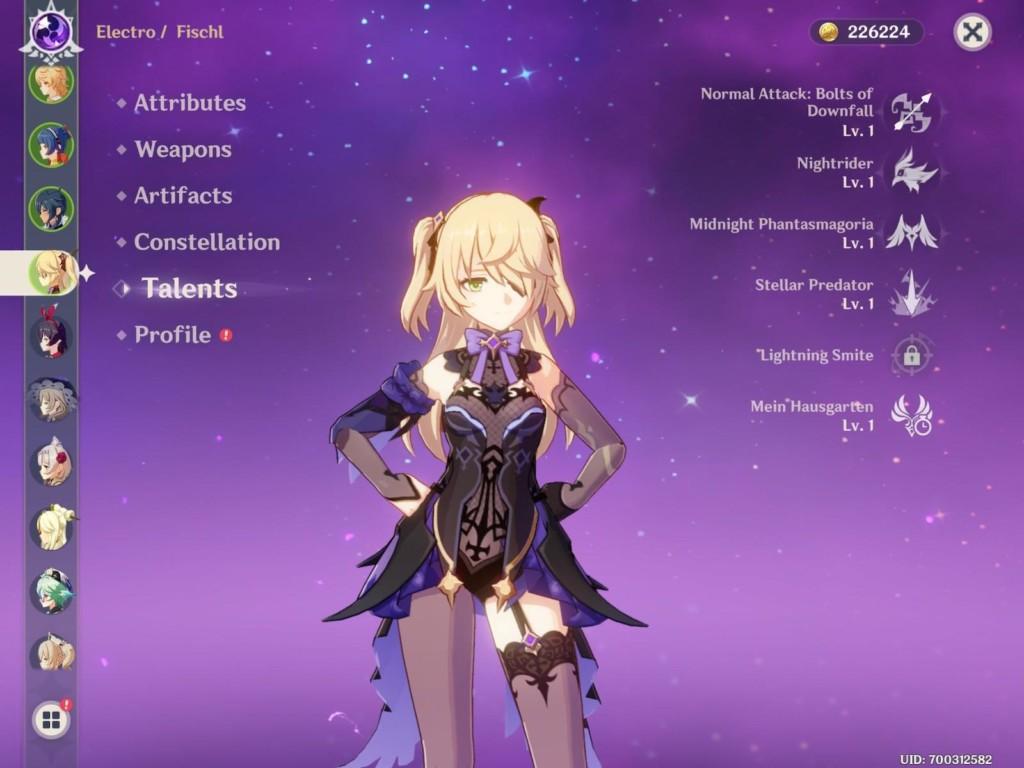
Weapons
Each character can use only a specific type of weapon in Genshin Impact. For example, Kayea uses swords, and Fischl uses bows. But weapons can be swapped around based on their stats and whatever type of benefits they provide. For example, someone might like a headshot bonus that a specific bow brings, or another one likes a bow that has a higher critical hit chance.
Weapons can also be upgraded in several ways to improve their base stats.
Enhance
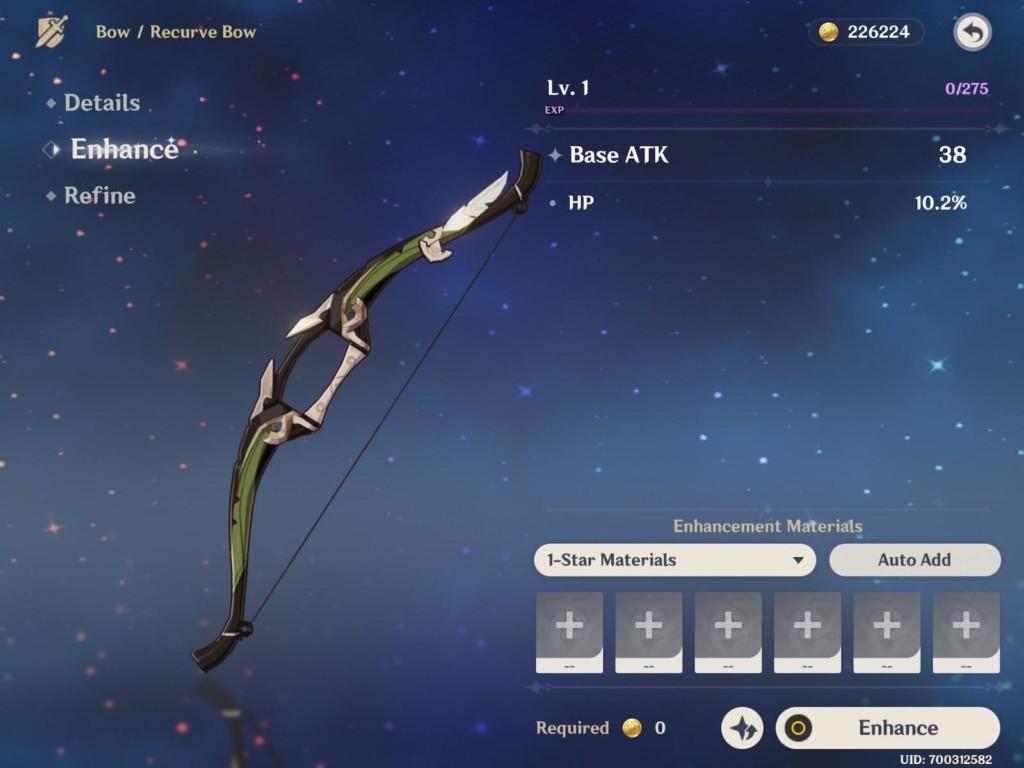
The basic weapon upgrading layer which increases the level of the weapon. To upgrade weapons, players can use Enchantment Ores (specific weapon XP items), OR they can use weapons that they don’t need as XP by fusing them.
Ascension
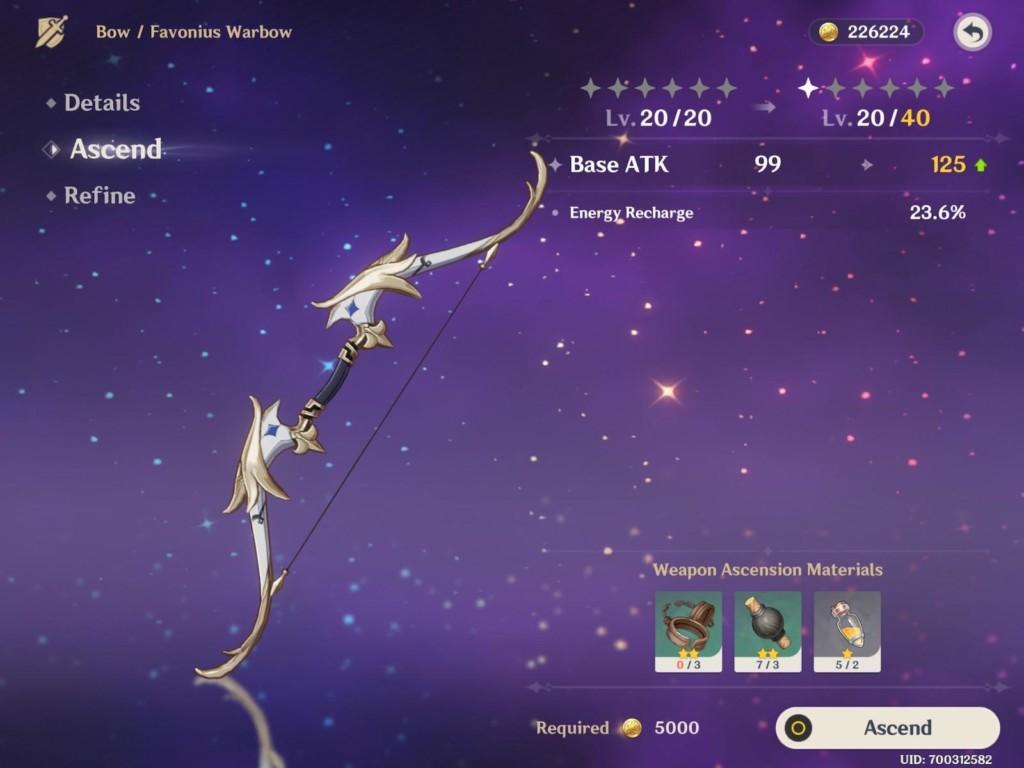
In a similar manner as with characters, players need to Ascend the weapon when the level cap is reached. To do this, they need to have specific material items. Each weapon has a specific “formula” of what items are needed. These material items can be found from different things such as specific Domains, exploration, or as quest rewards.
Refinement
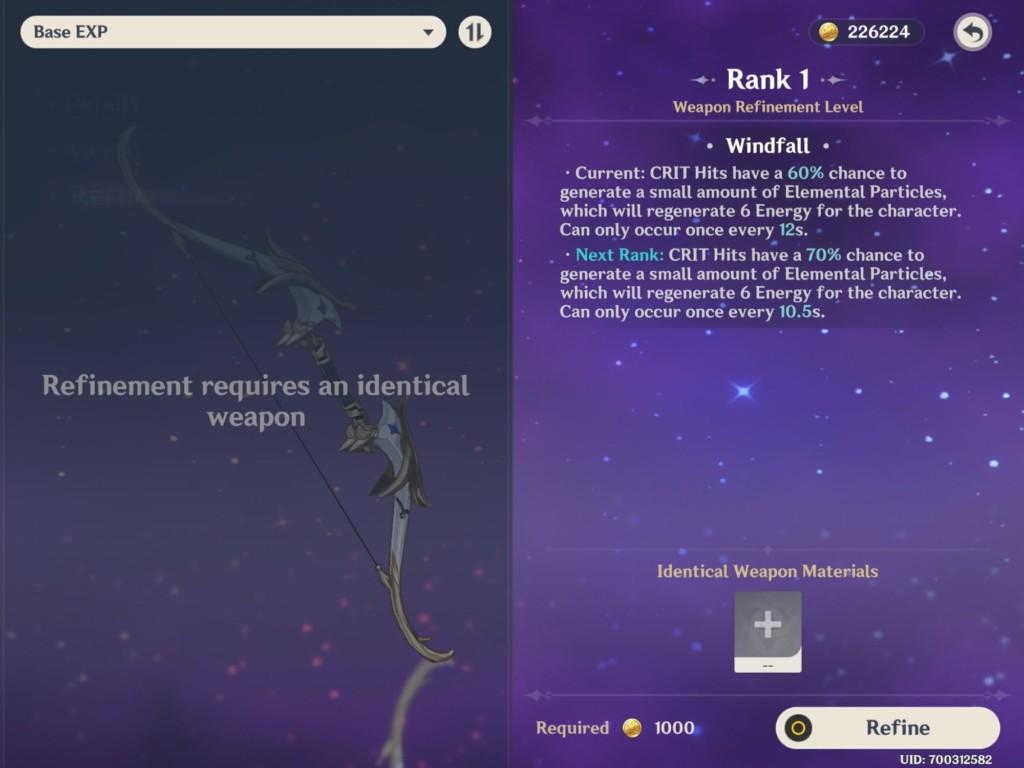
Again, in a similar manner as with the characters, miHoYo has built depth to the Genshin Impact’s gacha system by using the duplicate system. When a player acquires a weapon’s duplication, they can combine it with another same weapon to “refine” it. This improves the weapon’s main ability.
Artifacts
In Genshin Impact, artifacts are items that can be equipped for your characters. Each character has 5 slots where different types of items can be placed. Items differ quite a bit on what kind of stats they boost. For example, if you want to build a more defensive build, you might want to think about equipping items that mainly boost defense/health, or if you want to focus on damage dealing, you might want to go with different damage boosting Artifacts. Another big element for Artifacts is the Sets. Equipping items from the same set gives the character a set bonus that is often quite impactful and makes players equip their Artifacts in sets of 2 or 4.
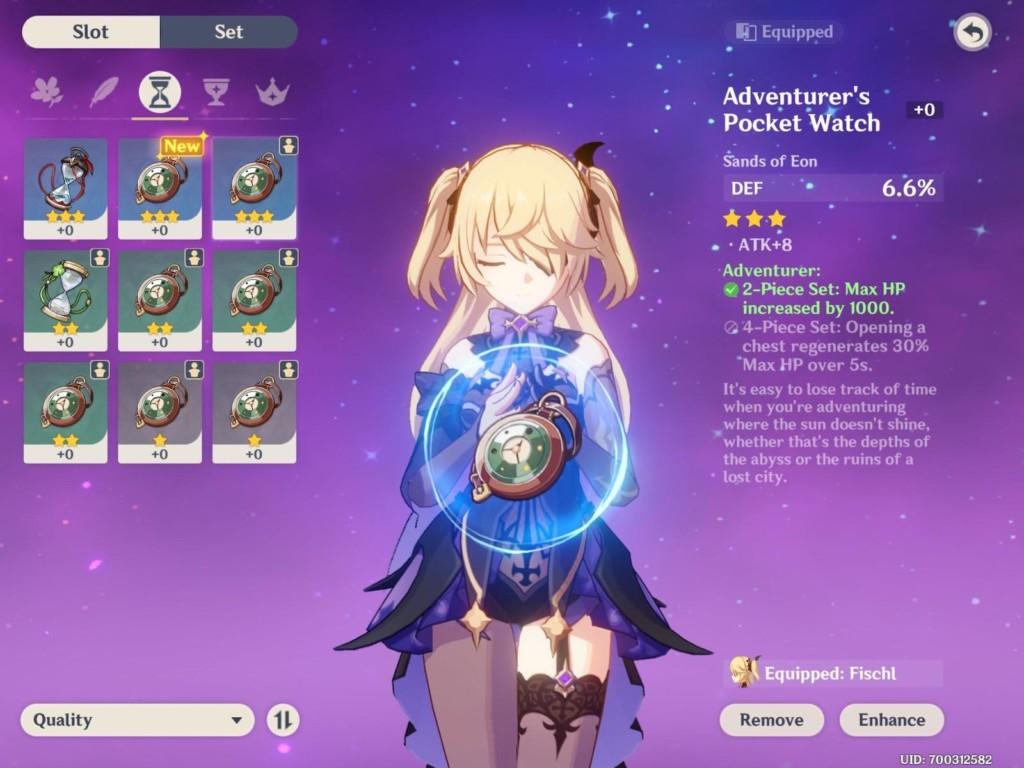
Enhance
Artifacts come in different rarities (star level), and that can’t be changed, so there is only one way to upgrade them, enhancing. This is done by fusing spare Artifacts as XP items.
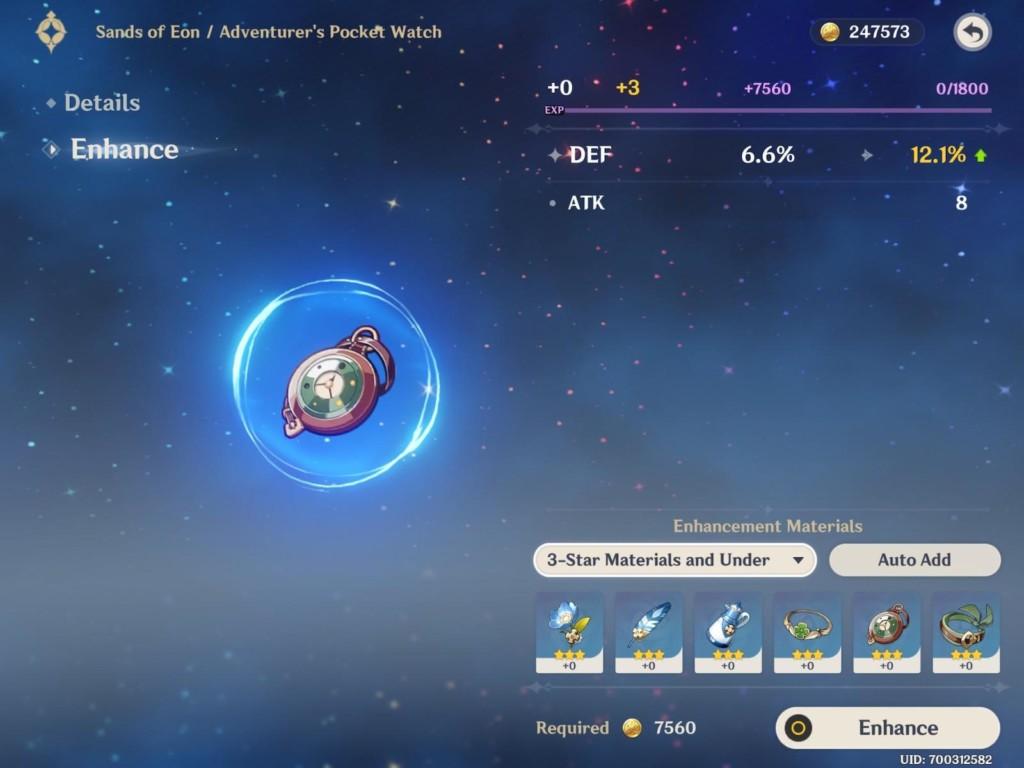
Genshin Impact’s Game Modes & Social Elements
The main story and side quests in the open world can get you only so far. To provide horizontal content and ways to grind those sweet upgrades for your characters, there are several different types of game modes/activities that players can participate in on top of the open-world questing/exploring. In this chapter, we’ll take a look at different game modes Genshin Impact currently has to offer.
Ley Line Outcrops & World Bosses & Domains
The game can be played mainly very freely without restrictions, but some of the things you do in the world require Original Resin (Genshin’s energy system).
- Ley Line Outcrops are spots where players can spawn a few waves of enemies, and after clearing them, they can redeem some rewards (XP items or soft currency depending on the player’s choice).
- World Bosses are boss fights that players can take part in. These fights reward you with, for example, character level up materials/artifacts.
- Domains are dungeons with selectable difficulties. These vary between what kind of items they offer. For example, one domain offers artifact loot and another weapon ascension material.
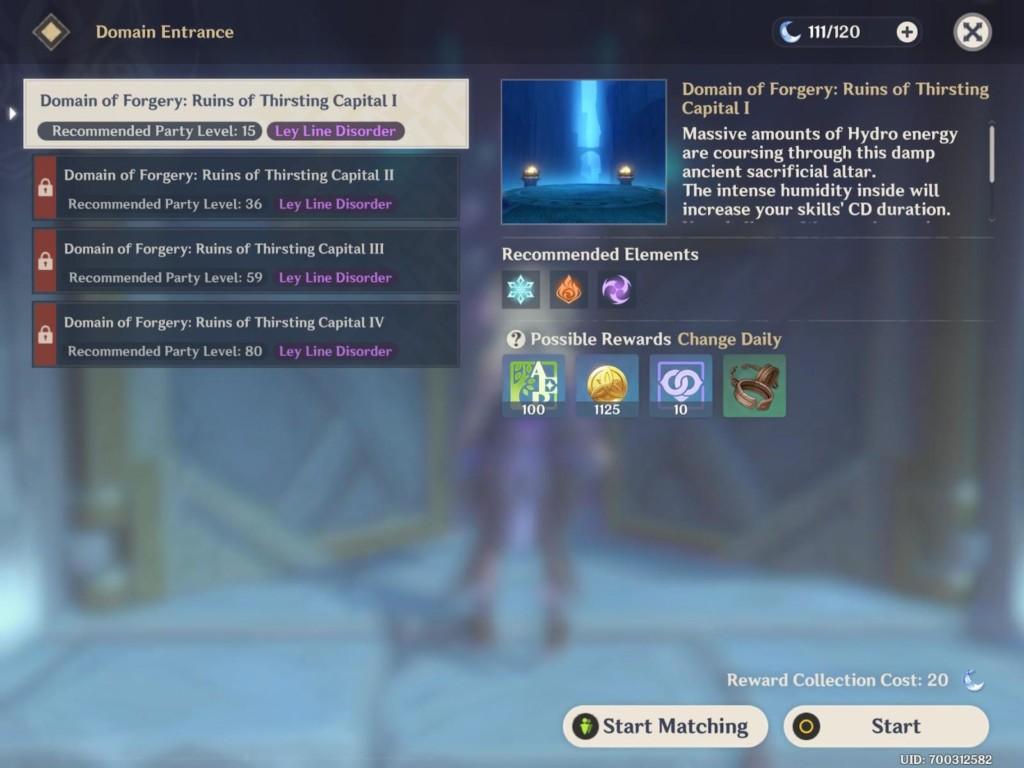
In order to redeem the rewards for any of these modes you need to spend a little bit of Original Resin. It accumulates over time or you can purchase more of it with premium currency.
Another thing that combines these activities is that they can be played together in co-op with other players. This is the only social feature the game currently has.
Expeditions
Expedition feature allows players to use characters that they are not actively using by sending them on quests for a certain time period. This feature can be used to grind, for example, different crafting materials.
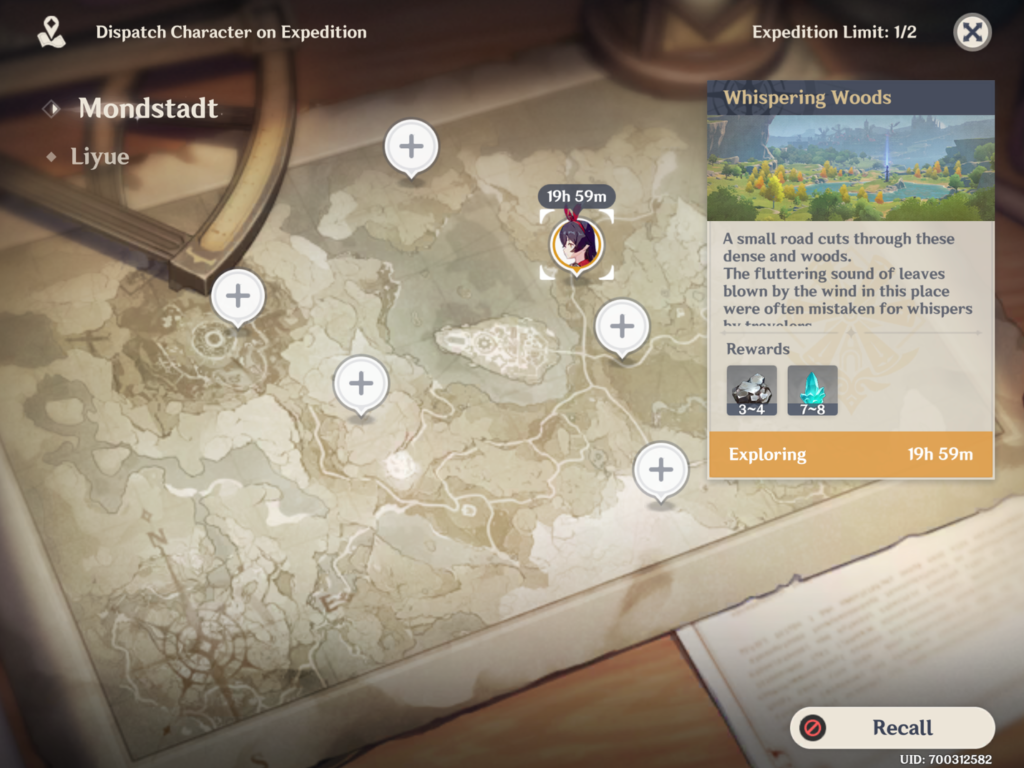
Spiral Abyss
Spiral Abyss is one of the few end-game focused features that the game has. It is a dungeon separated into two distinct parts: “Abyssal Corridor” and “Abyssal Moon Spire.” First, you need to finish the 8 levels of Abyssal Corridor, and after that, you get access to Abyssal Moon Spire.
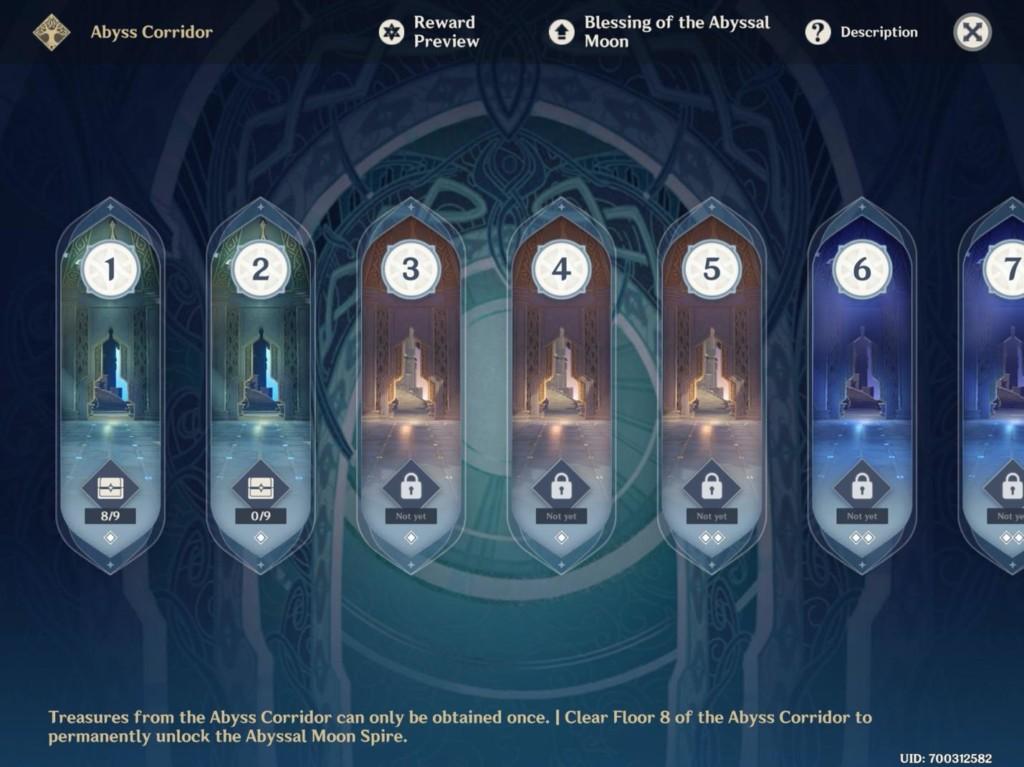
So how does this feature actually work then? Basically, it is a tower type dungeon where you complete ever increasingly harder levels with varying sets of challenges (for example, you need to beat the enemies in a certain time period). Each floor has its own rules. For example, pyro damage is increased by 75% in the first level, which steers you automatically to choose pyro characters for your team to complete all the challenges quickly enough.
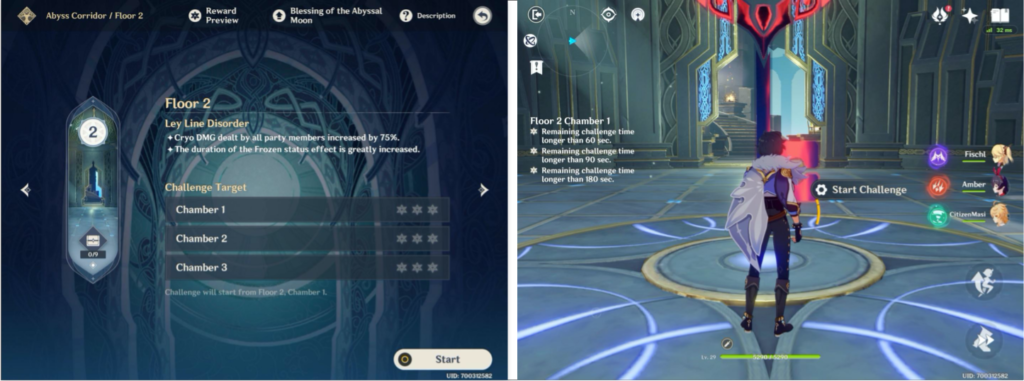
Rewards for this feature include for example: premium currency, very rare artifacts and XP items.
Abyssal Corridor levels don’t reset over time, so when those are done, they are done, but Abyssal Moon Spire resets twice a month. The ruleset of the levels and the rewards change. The varying rulesets of the levels push players to keep upgrading their character roster on a wide spectrum because you never know when you need your Cryo ranged character in Spiral Abyss even when you wouldn’t normally use it.
Spiral Abyss is one of the few features that give players reasons to keep on grinding levels to their characters after the main quest completion. Is it enough to keep retaining players? Of course, miHoYo is developing more content and features to the game, but at the moment, the endgame feels quite light, so we feel that either they need to push engaging content on a constant quick enough cycle to keep players in, or they need to think about some other endgame focused features as well.
Monetization in Genshin Impact
Overall in terms of monetization, Genshin Impact is a very interesting case. Players can play the game quite freely for a very long time without even realizing the possibility of using real money. So it definitely goes with engagement first, monetization second strategy. In this chapter, we take a quick glimpse of the monetization methods/features that the game uses.
Gachas
As mentioned in this post’s meta part, gachas (called Wish in-game) are used to acquire Characters and Weapons. How it works is quite familiar from RPGs. The game has the “Standard Gacha,” which remains quite the same all the time, and then it runs the limited time gachas, which have specific characters/weapons as “featured” with higher probabilities of acquiring them.
Two different currencies are used to pull from gachas: Intertwined Fate (used for limited-time gachas) / Acquaint Fate (used for Standard Gacha). These currencies can be earned from advancing your account level (Adventure Rank), from Battle Pass OR purchasing them with premium currency/real money.
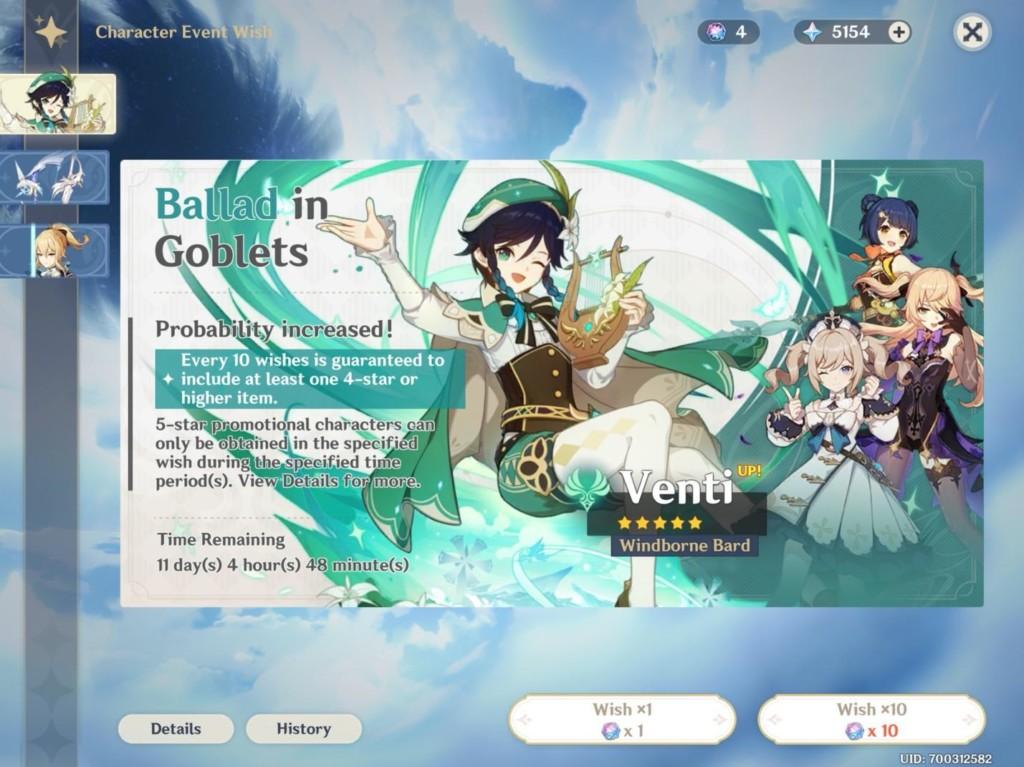
In the meta section of this post, we already discussed how miHoYo has created depth to the gacha system by having the duplicate economy in place (you can upgrade characters/weapons with their duplicates). There is another system in place when players receive duplicates; there are specific currencies (Starglitter/Stardust) you receive on top of the duplicate characters/weapons. These currencies can then be used for direct purchases of specific weapons or characters in the store.
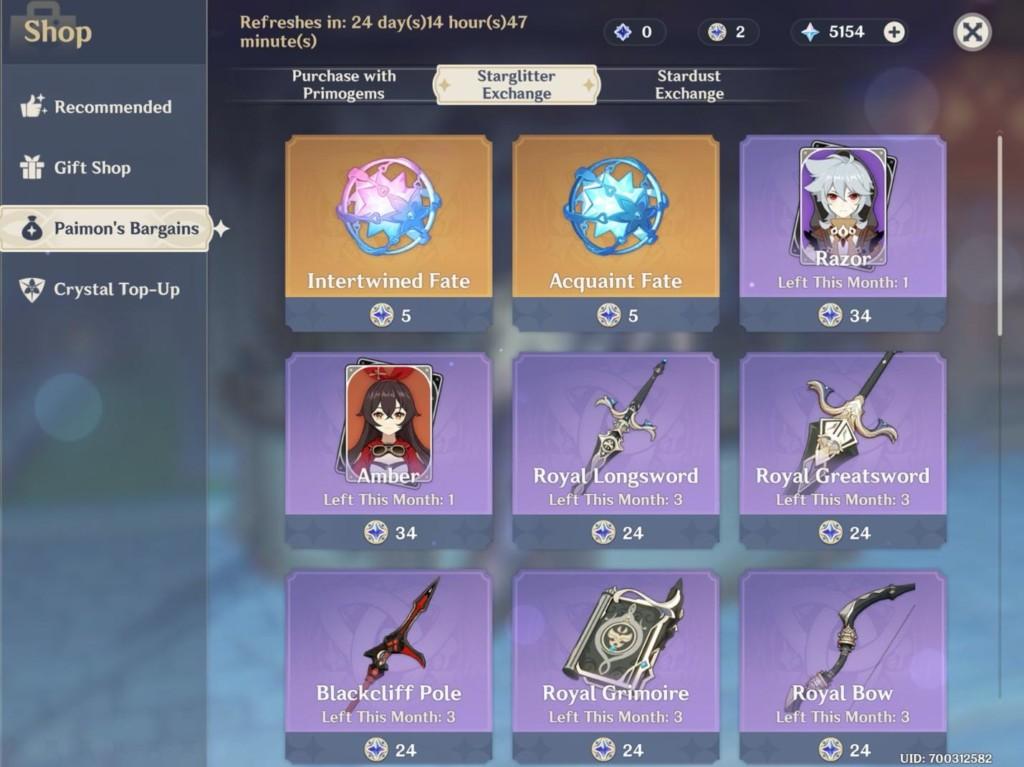
Battle Pass
Genshin Impact introduces its Battle Pass system very late in the game. Players need to reach Adventure Rank 20 (account level of the player) to unlock this feature. It can easily take up to 15-25 hours of gameplay. This is rather unusual as we’ve already written here about how popular Battle Passes have become in mobile games and that they’re a crucial monetization mechanism that’s offered early on in the player experience.
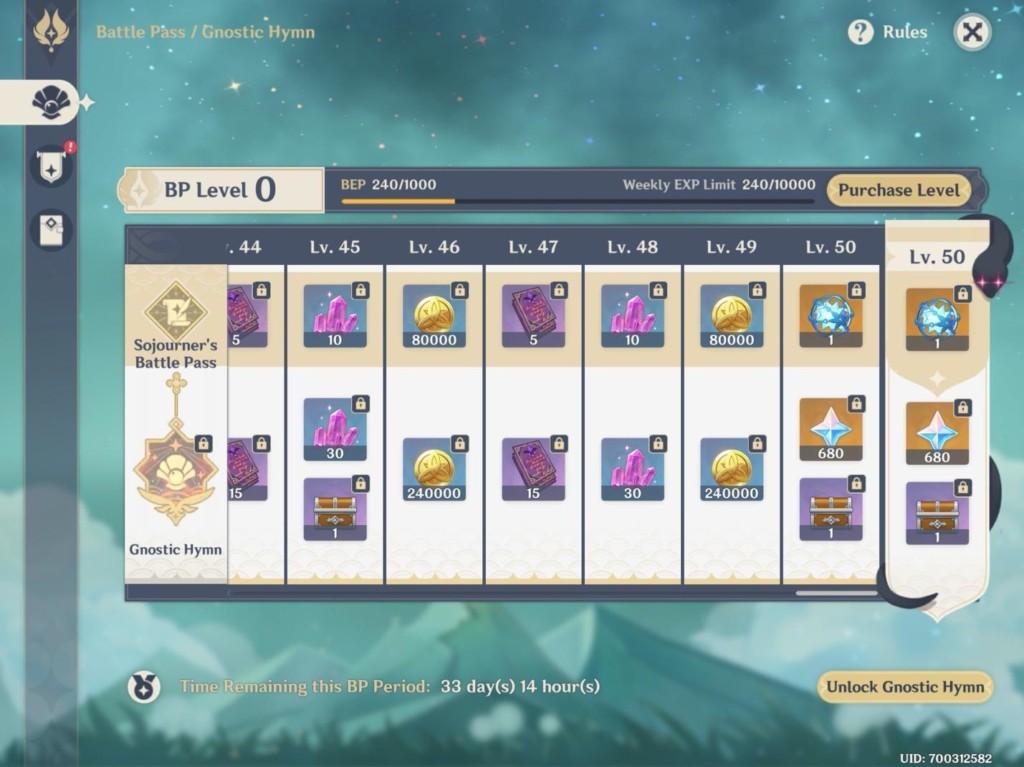
Genshin’s Battle Pass is based on task-based progression. Players earn BP experience by completing daily, weekly and season-long quests. Players can also buy BP levels directly if they want to progress instantly.
Rewards from the Battle Pass include XP items for characters/weapons, gacha currencies, AND as a big driver for purchasing the BP, there are unique weapons that can only be acquired through Battle Pass.
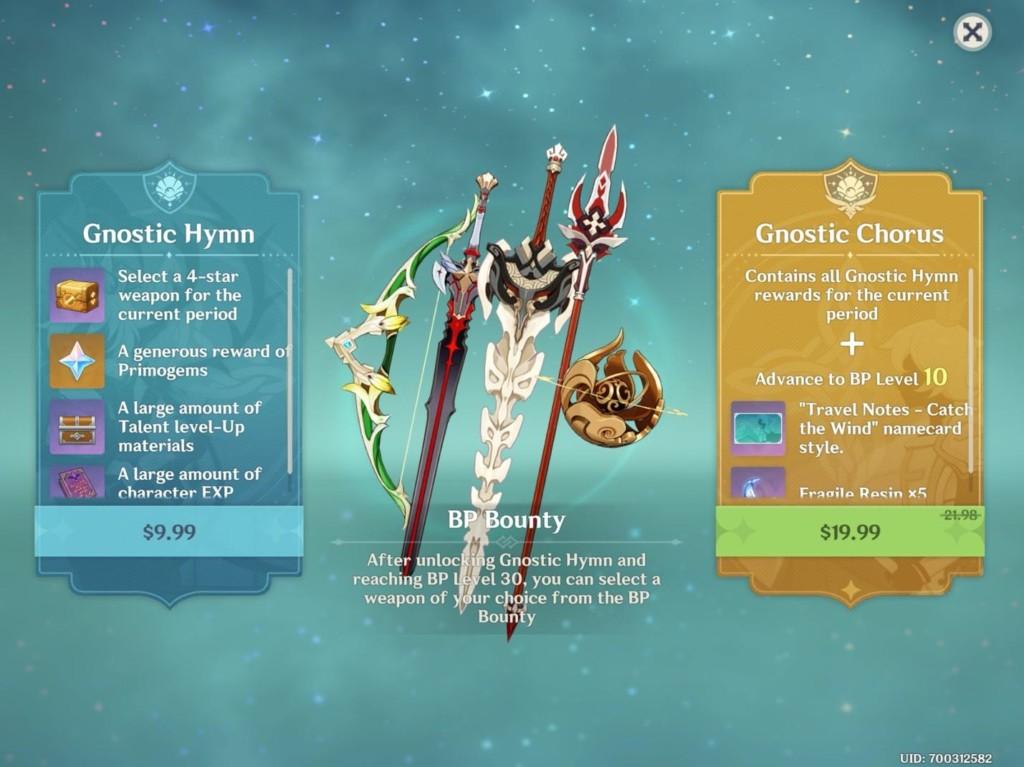
Energy/subscription/bundles
As discussed in the game mode section of this post, energy to do certain world activities can be bought with premium currency.
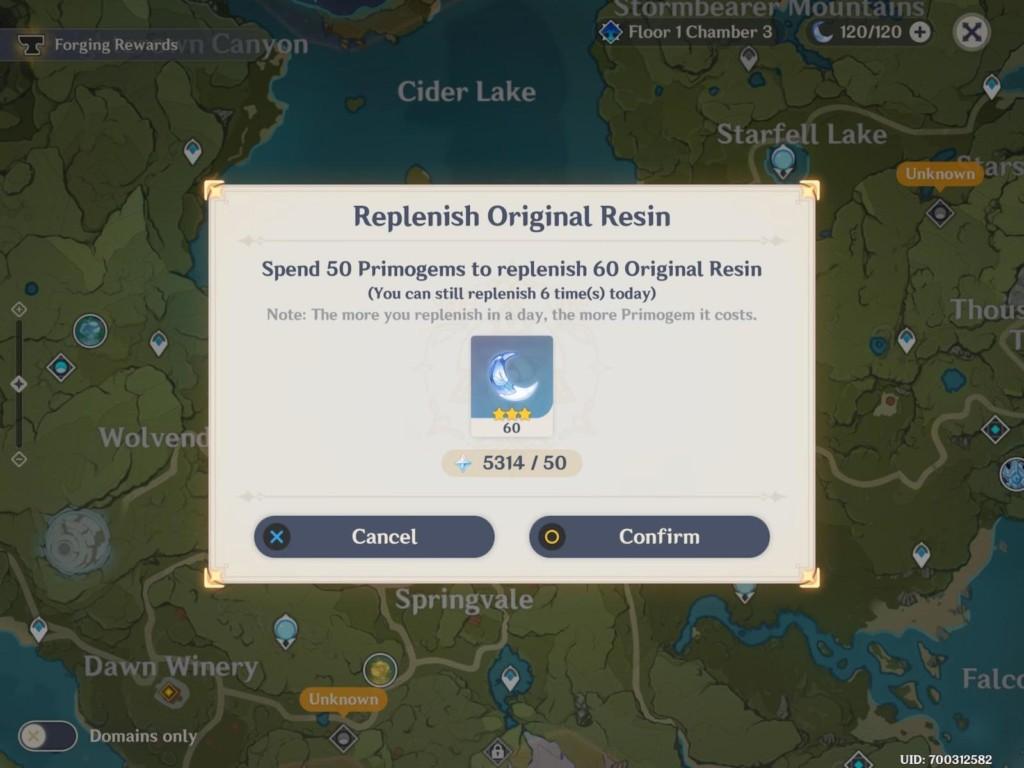
Players can purchase a subscription of 30 days in which they get premium currency on a daily basis.
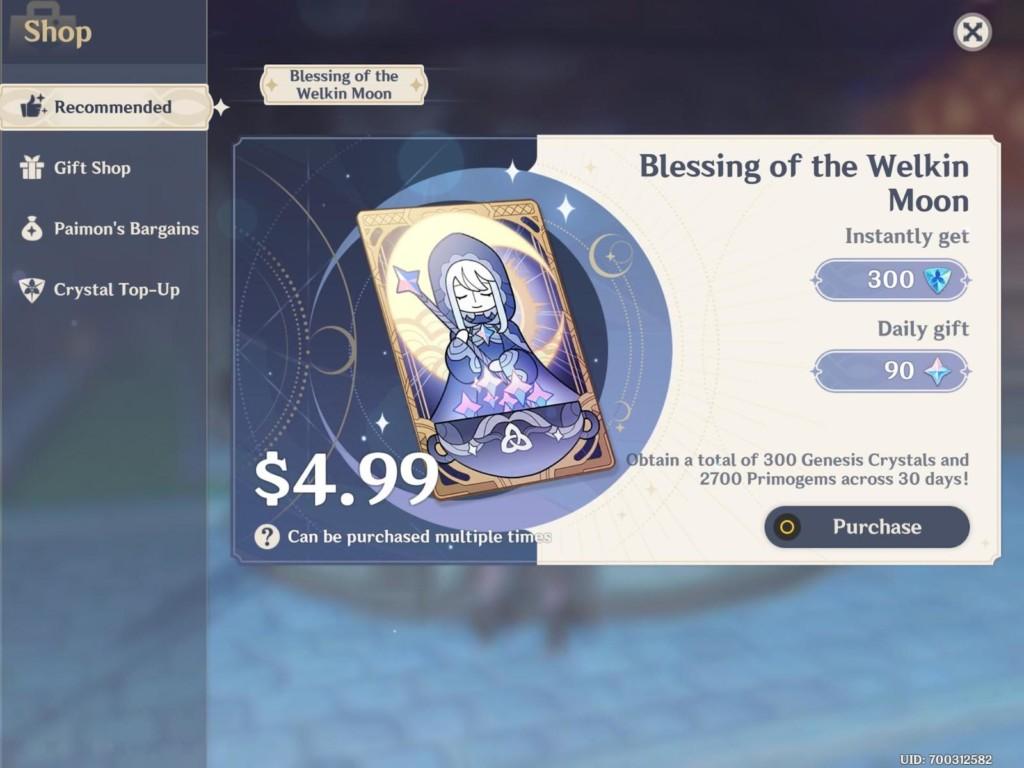
What’s Next for Genshin Impact?
It’s pretty evident that Genshin Impact is ticking off many of the boxes that go into making a good video game. But how well will it perform in the F2P mobile space in the long run, where player retention is a product’s lifeline?
There is no doubt Mihoyo has lots of exciting content planned for GI’s updates, such as the main storyline’s continuation. Some things we feel that could boost the game’s feature set further include:
Stronger Cosmetics Meta
miHoYo has spent a lot of effort into building its world/IP to flesh out the characters you collect so that players would feel more connected to them. That’s why a stronger cosmetic layer to provide more customization possibilities to your favorite heroes would feel suitable. Hero collection games with well-crafted characters, such as the Seven Deadly Sins, offer ample opportunities for monetizing vanity items such as character skins.
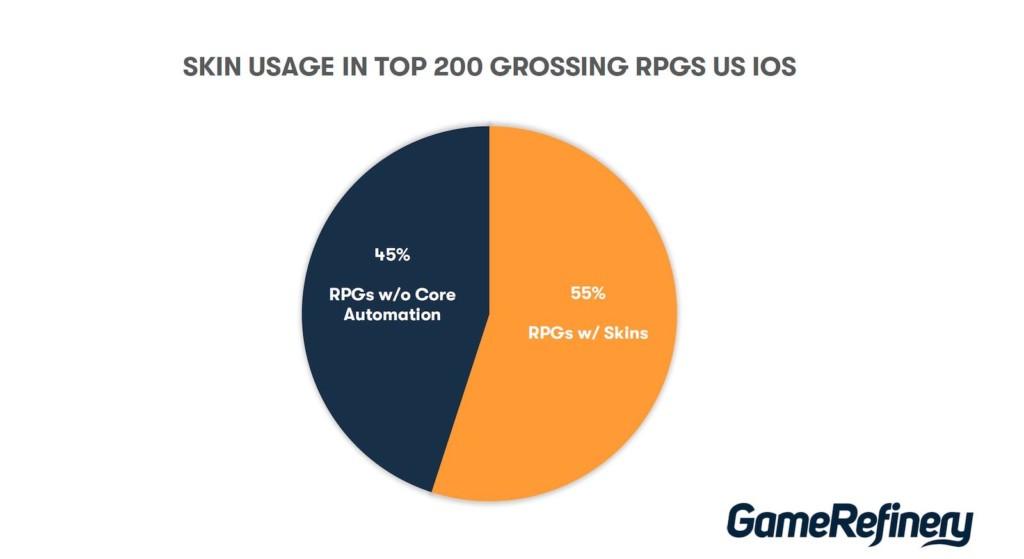
More Social Elements
Many RPG gamers are fans of the genre because they provide a platform to socialize. The addition of guild mechanics would create social engagement triggers and provide a solid backbone to add other guild related features, such as guild tasks.
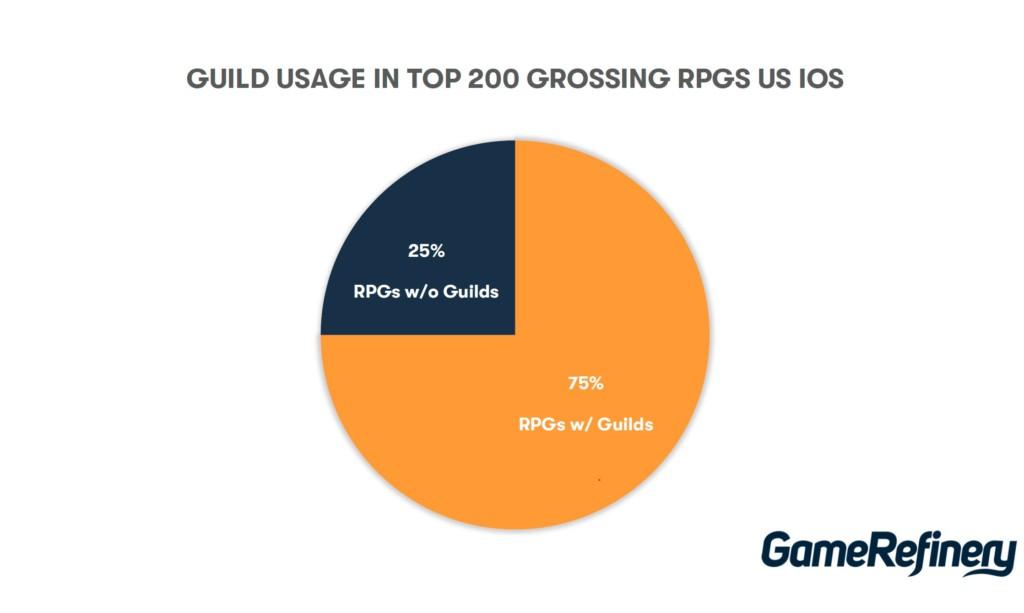
Adding competitive elements, most notably PvP, would engage the GI’s player segment that is motivated by competing against other players. Here you can see how big motivation competition is for RPG-players.
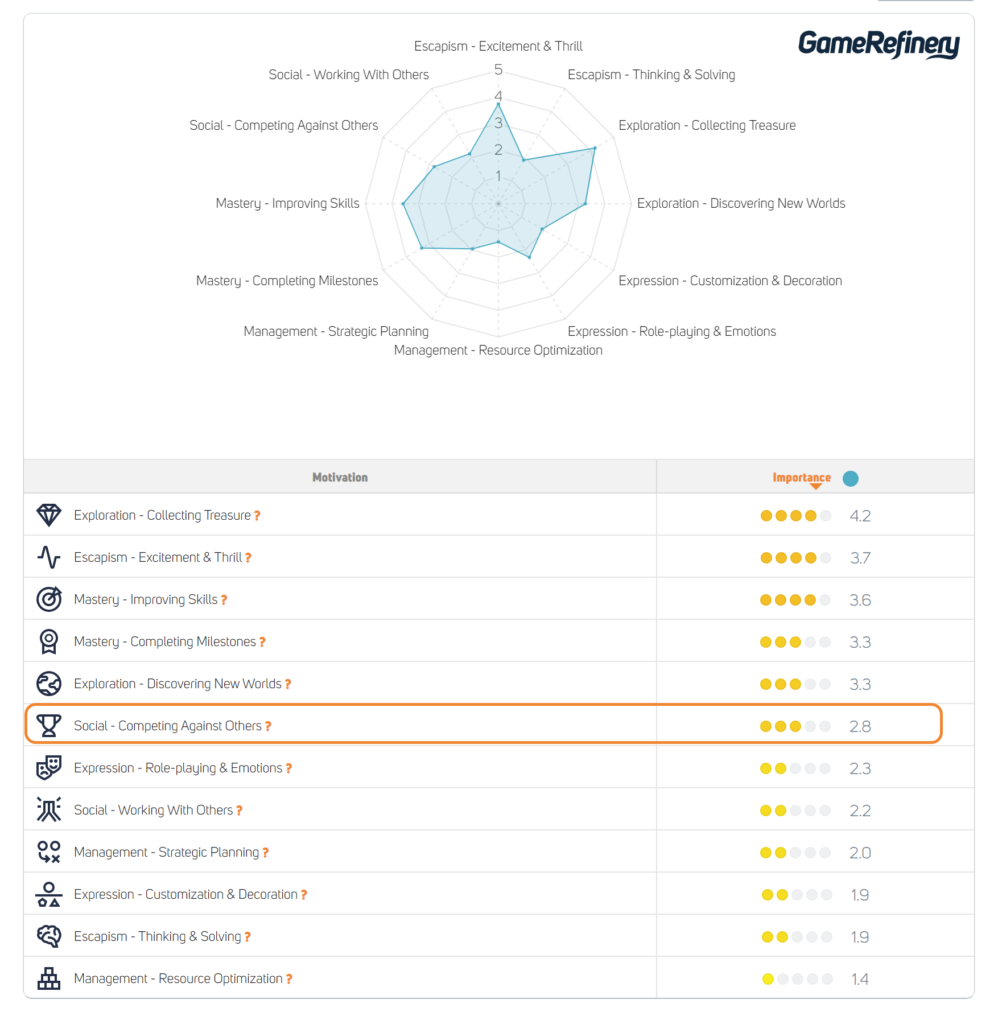
Of course, as we’re talking about an RPG game with power progression, PvP needs to be carefully implemented, and there might be plenty of balancing issues. Still, as the core gameplay is so lovingly crafted, it would be great to see and experience PvP combat with it.
Developing the co-op feature further by implementing it to more game modes and quest lines might boost its attractiveness.
More & Bigger Live Events
A frequent live event cadence is a must these days to ensure long-lasting top-grossing success. We can surely expect various events coming to GI, such as seasonal & recurring events, bundle offers, exclusive event content, etc. And how about a crossover event with the Honkai Impact franchise…?
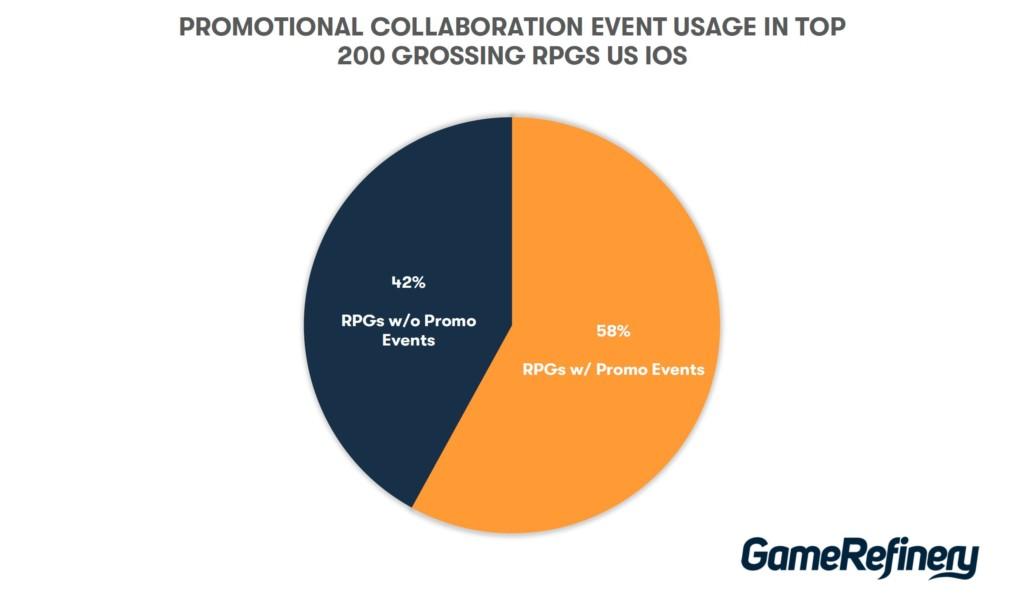
Genshin Impact: Conclusion
The fact that some of Genshin Impact’s core competencies revolve around graphical fidelity and the core gameplay experience may present its own risks. Will players who are in it for the narrative or exploration mechanics stick around after the novelty of gameplay wears off or when credits start rolling on screen?
Log in here to the GameRefinery tool, see feature deconstructions, and implementation screenshots from thousands of games across the market!
If you enjoyed reading this post, here are a few more you should definitely check out:


